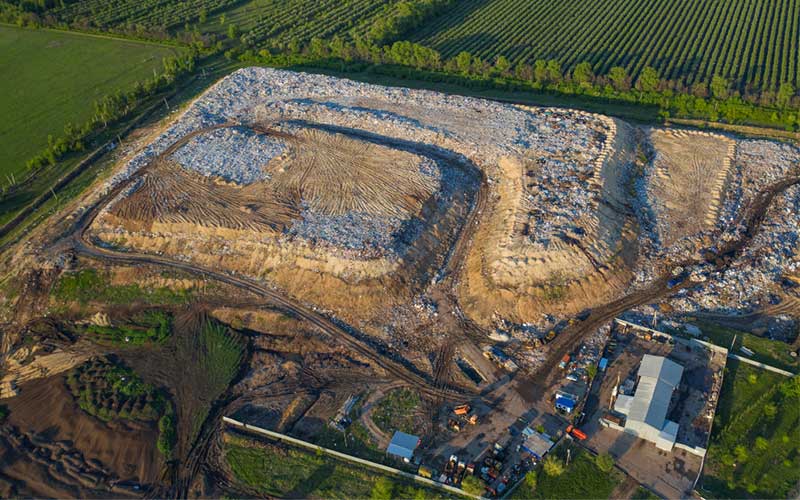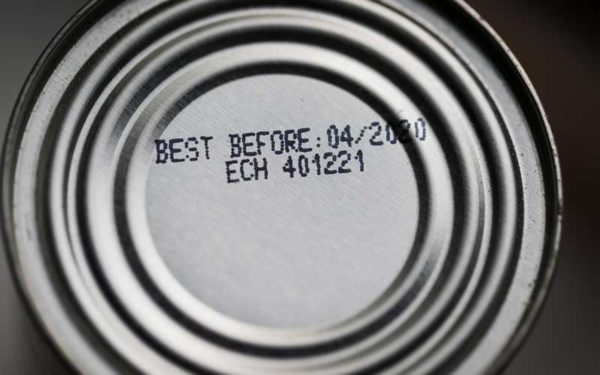
Time and again, corporate waste giants have been granted permission to expand their dangerous landfills. Photo: via Shutterstock.
Landfills are dangerous. And, expanding a landfill’s acreage or the number of tons it buries each year is a surefire way to increase the pollution it emits into the air, soil, and water.
CLF’s Zero Waste Project has surveyed all 75 solid waste and ash landfills operating in New England, but we’ve looked most closely at the ones trying to expand. Many of these landfills started out as small, local dumps, but corporate waste giants like Casella, Waste Management, and Waste Innovations (formerly Wheelabrator Technologies) have built them into regional mega-landfills.
Considering about 80% of what’s buried in our landfills is recyclable or compostable, it’s past time to phase out landfills in New England. A good first step would be to pass legislation that keeps waste companies from building any new landfills and expanding any existing facilities. Here’s a look at six dangerous landfills in northern New England that CLF is actively advocating against. (We’re fighting four more landfill expansions in southern New England, too).
1. Turnkey Landfill | Rochester, New Hampshire
Operator: Waste Management
Total Size: 217 acres
Status: Permit to Expand Granted
Proposed Expansion: 58.6 acres
Tons of Waste: The Expansion allows for 15.9 million tons of trash to be buried through 2034. But there is no limit to how much Waste Management is allowed to bury at the site each year.
Danger: This dangerous landfill sits near both the Cocheco and Isinglass Rivers. The expansion would be disastrous, as groundwater monitoring already indicates the presence of cancer-causing toxics that may harm the nearby community of Dover, which gets some of its water downstream from the landfill.
How We’re Fighting Back: While the expansion has been approved, CLF has sued the state Department of Environmental Services for not following a law requiring officials to engage in ongoing statewide solid waste management planning. That planning should have been used to help the Department in deciding whether to grant permits for new and expanded landfills like Turnkey.
2. Bethlehem Landfill | Bethlehem, New Hampshire
Operator: Casella Waste
Total Size: 50 acres
Status: Permit to Expand Granted
Proposed Expansion: 6 acres
Tons of Waste Per Year: Expansion allows for 175,000 tons of trash each year
Danger: The landfill’s proximity to the Ammonoosuc River at the foot of the White Mountain National Forest puts the waterway and those who use it in danger. In fact, 1,4 dioxane, manganese, and iron levels have all increased in groundwater monitoring of the area over the past several years.
How We’re Fighting Back: CLF appealed the Department of Environmental Services’ permitting of the expansion to the state’s Waste Management Council. We also filed an action in state court to try to stop Casella from expanding its operations until the Council has decided on our appeal.
3. Juniper Ridge Landfill | Old Town, Maine
Operator: Owned by the state, but operated by a for-profit subsidiary of Casella Waste
Total Size: 68 acres
Status: Permits to Expand Granted
Proposed Expansion: 54 acres
Tons of Waste Per Year: The permitted expansion has approved the landfill to accept 700,000 tons of trash each year.
Danger: Located just a few miles from the Penobscot Reservation, this dangerous landfill sits on land valued by the Penobscot Nation. Groundwater samples have found arsenic levels that exceed state and federal limits, and the landfill threatens to continue leaking toxics into the Penobscot River and Pushaw Stream.
How We’re Fighting Back: CLF is working with community group Don’t Waste Maine to close an existing legal loophole that allows out-of-state waste to be dumped in the state-owned landfill – despite a 1989 law prohibiting this. We’re also supporting legislation introduced this session that would close the loophole.
4. Granite State Landfill (Dalton Landfill) | Dalton, New Hampshire
Operator: Casella Waste
Total Size: 137 acres
Status: Wetlands Review has Begun
Expansion Size: This proposal would build a new landfill
Tons of Waste Per Year: 466,000
Danger: Construction of the landfill will destroy 17 acres of forested wetlands. Additionally, 160 acres of wildlife habitat would be clear-cut. The landfill would also sit only 3,000 feet from the water’s edge of nearby Forest Lake State Park.
How We’re Fighting Back: CLF is currently reviewing Casella’s permit applications and will submit comments opposing this dangerous landfill proposal. We’re also supporting the efforts of community groups and organizers working to oppose it.
5. Coventry Landfill | Coventry, Vermont
Operator: Casella Waste
Total Size: About 90 acres
Status: Most Permits to Expand Granted
Proposed Expansion: 51.2 acres
Tons of Waste Per Year: Permitted to accept 600,000
Danger: Contaminants in the landfill’s leachate (or garbage juice) run through wastewater treatment plants before being released into Lake Memphrémagog – a drinking water supply for towns just across the border in Canada. Recently, toxic PFAS chemicals have been detected in the lake. Monitoring data also shows that this dangerous landfill leaks harmful pollution like arsenic, lead, and other heavy metals into the surrounding groundwater.
How We’re Fighting Back: Casella has all the permits it needs to expand the landfill – except a new pretreatment permit requiring them to remove any PFAS from the leachate before they can discharge it into local wastewater treatment facilities. We’re working with local partners and state environmental agencies to prevent more chemical contamination in the region’s drinking water.
6. Crossroads Landfill | Norridgewock, Maine
Operator: Waste Management
Total Size: 817 acres
Status: Permits to Expand Granted
Proposed Expansion: 48.6 acres
Tons of Waste Per Year: 450,000 tons
Danger: The new landfill would only use one liner, as opposed to the standard two-liner system. This raises the likelihood of the landfill releasing poisonous gases and leachate into the environment, contaminating our climate, as well as the soil and groundwater. Plus, all landfills eventually leak.
How We’re Fighting Back: CLF opposed the granting of the permit, and we will decide on next steps once we review the final permit language.
Zero Waste is the Solution
New Englanders continue to accept dangerous landfills and incinerators as the status quo for managing our trash because public officials fail to implement and enforce waste reduction policies. They are, unfortunately, captives of corporate waste companies who constantly tell us that burning or burying our trash is the only way to deal with our waste. But that’s simply not true.
We don’t need bigger landfills. We do need to produce less trash. And we can do that by adopting sustainable Zero Waste alternatives that can help phase out polluting trash systems that poison our environment and our communities. These alternatives help us rethink the design of products and packaging and how our trash is managed. Plus, Zero Waste programs don’t harm people, the planet, or our economy.
You can help New England shut down the dangerous landfills harming communities in your state. Call on your governor today – urge them to put the health of your state and its people first by replacing these polluting garbage piles with Zero Waste alternatives.



